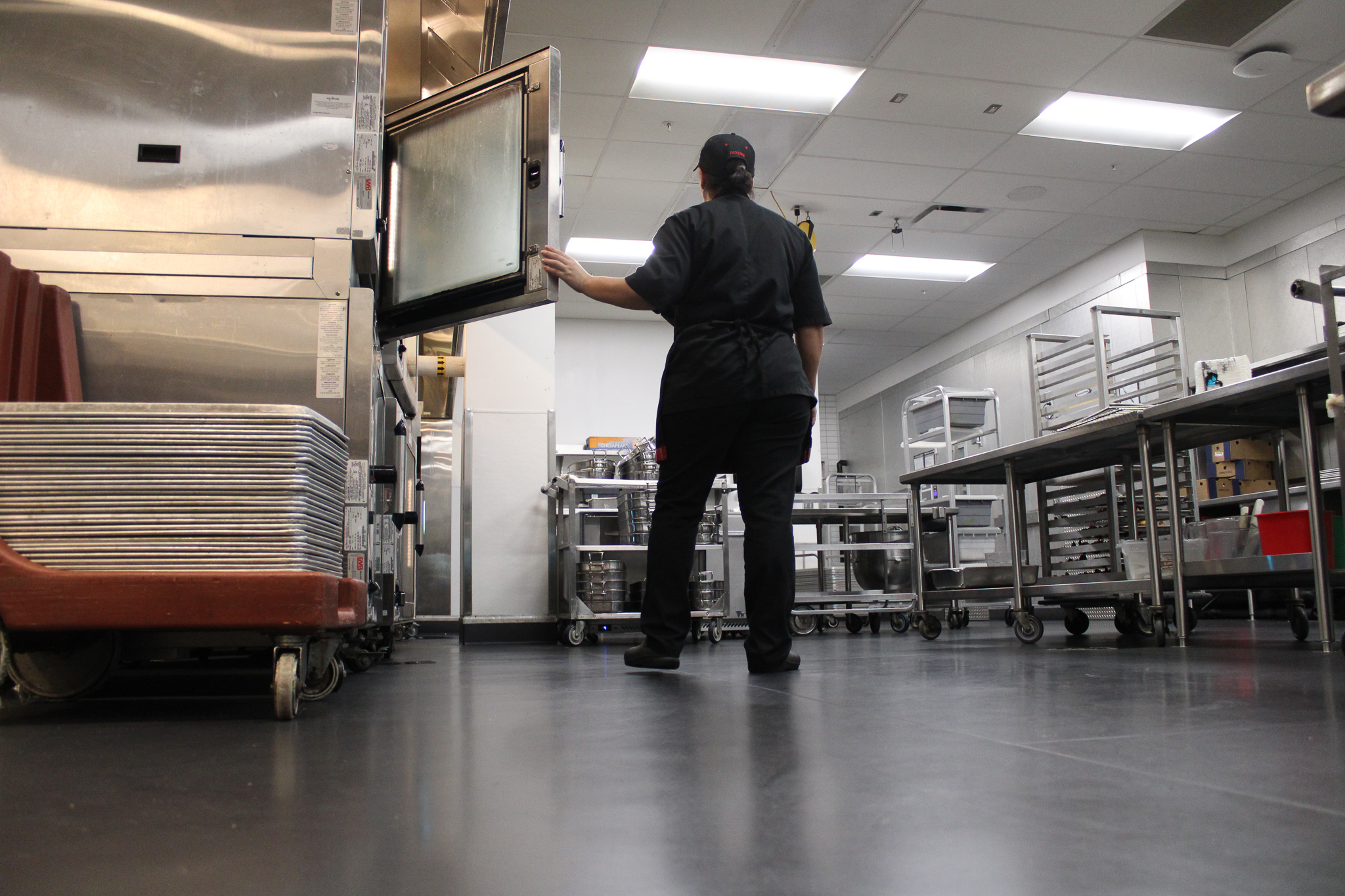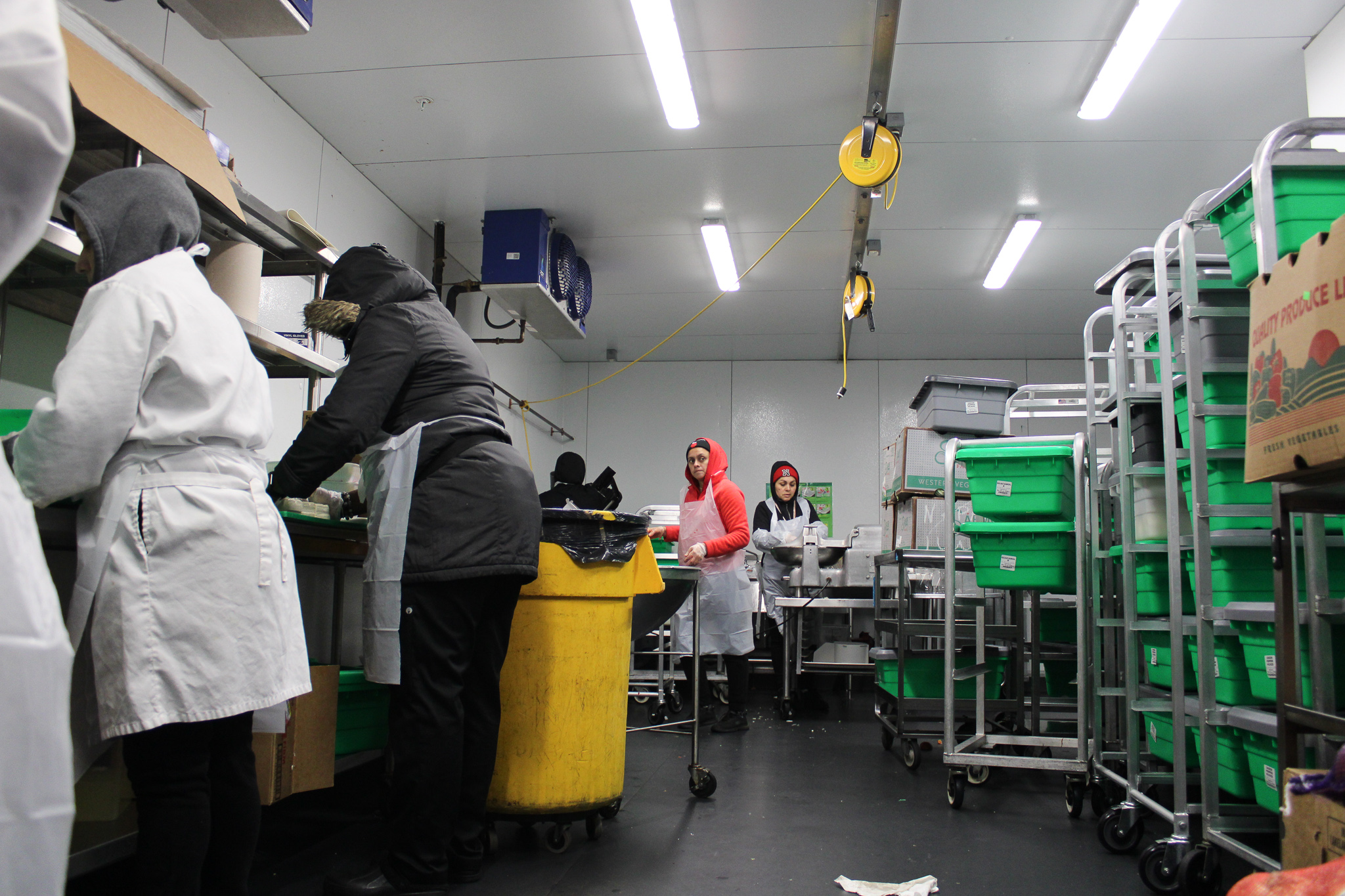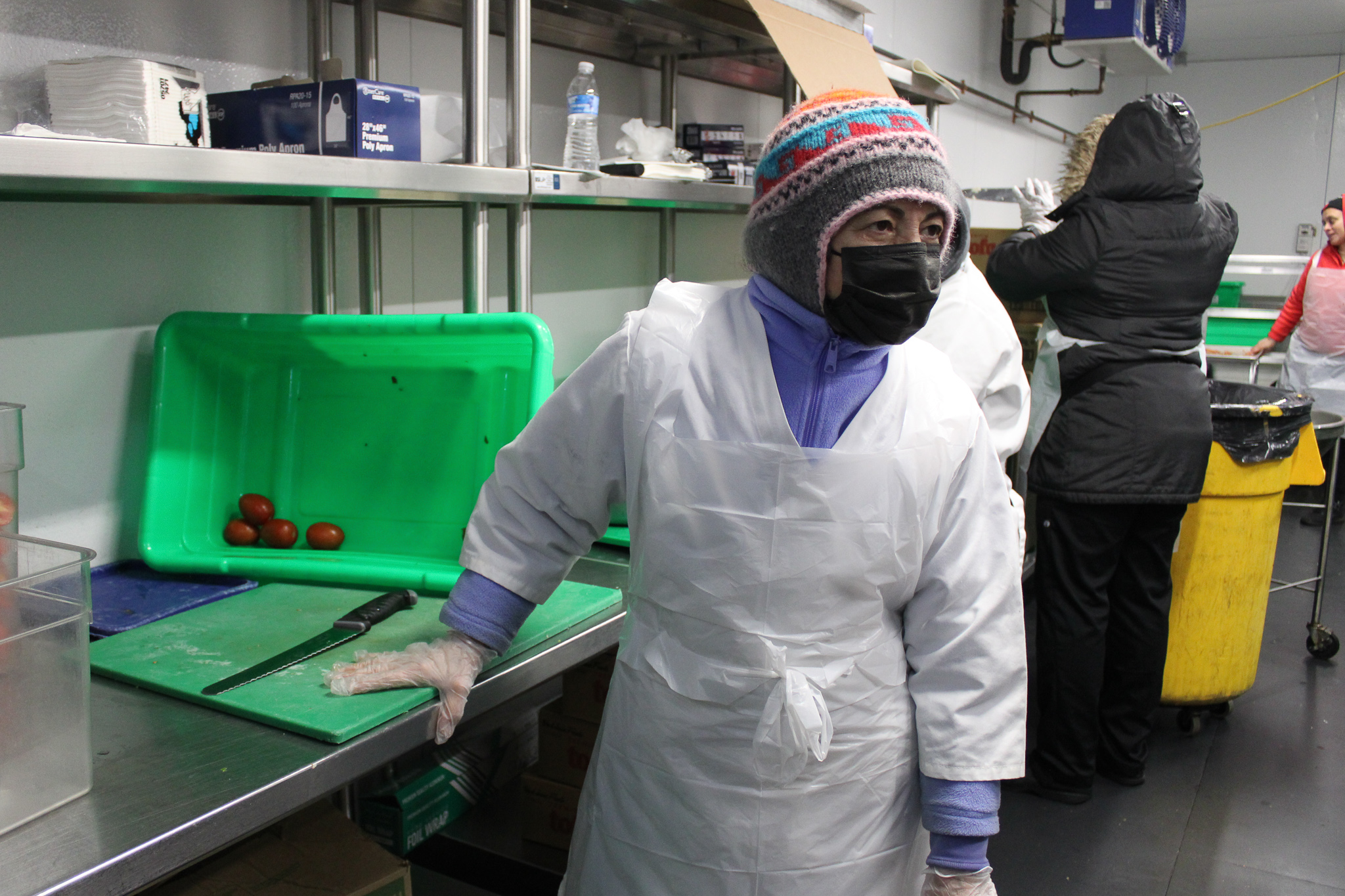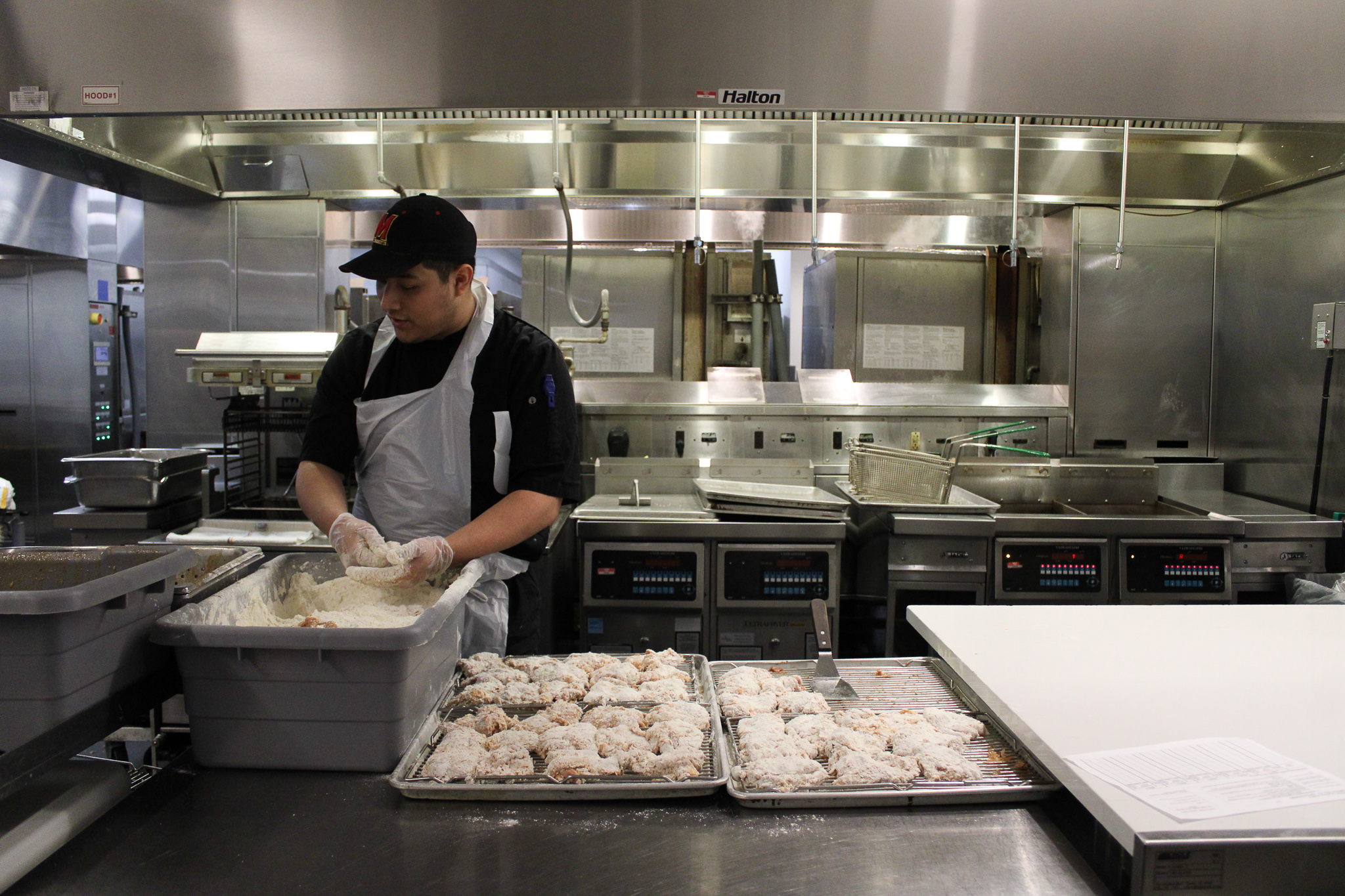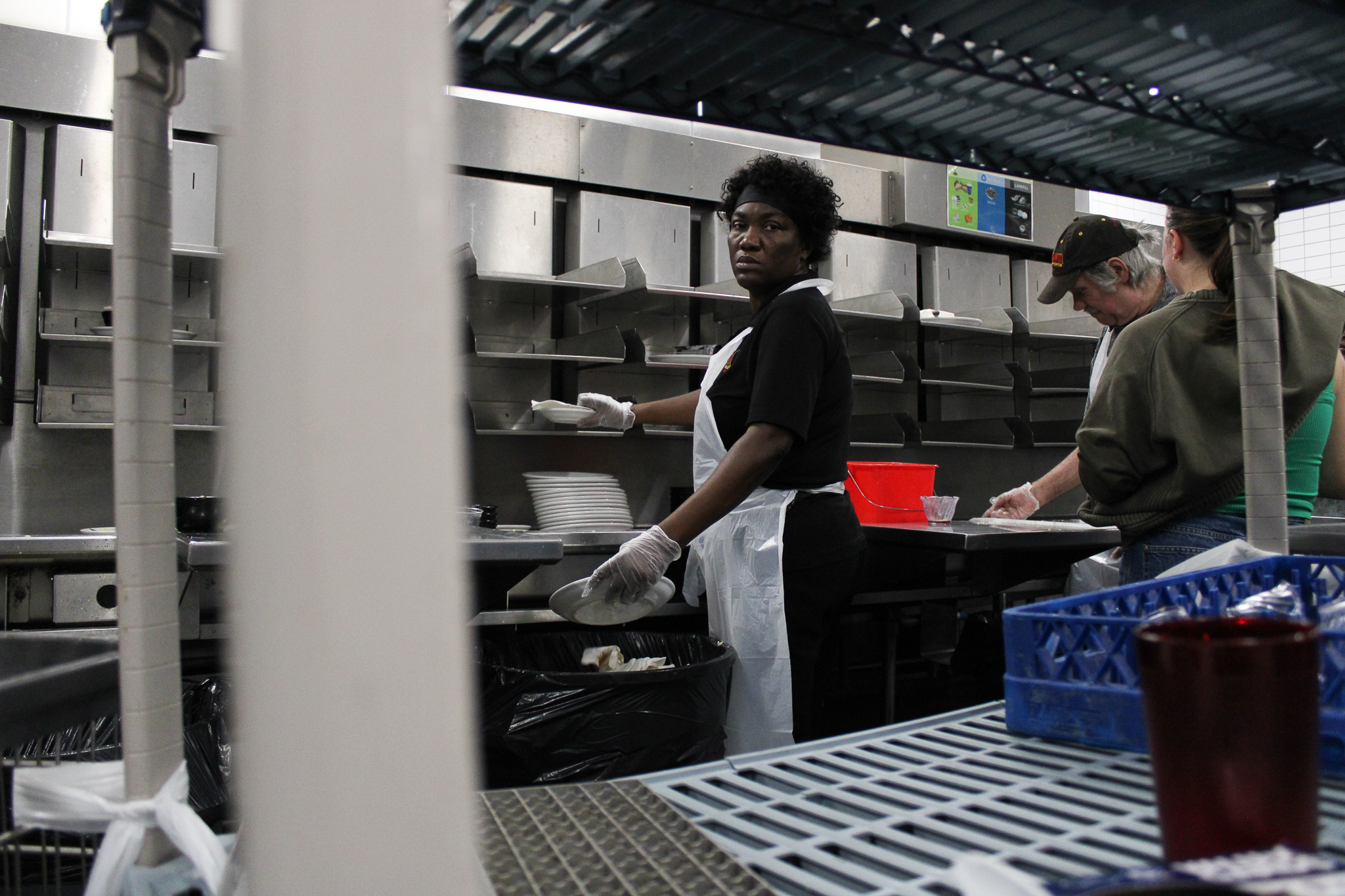As University of Maryland students enter Yahentamitsi Dining Hall, about 220 Dining Services employees slice vegetables, fry ingredients and curate menus to serve more than 10,000 people daily, according to Dining Services director Christopher Moore.
The 60,000-square-foot dining hall opened in fall 2022 in honor of the Piscataway people, who are indigenous to Maryland. Yahentamitsi translates to “a place to go to eat” in the Piscataway people’s Algonquian language.
Dining hall employees prepare about 11,600 pounds of chicken thighs, 120 pounds of kale caesar salad and 4,000 pounds of french fries every week, Moore wrote in an email to The Diamondback. On the way out, students can also grab one of the more than 4,000 cookies baked each day, according to Moore.
The Diamondback interviewed Dining Services employees and toured Yahentamitsi Dining Hall’s kitchen last month to dive into how the 2-year-old dining hall sustains its production.
Before the plate
Yahentamitsi Dining Hall operates on a four cycle menu, meaning that in each week, there are seven menus for each day of the week, manager Abdul Haqq told The Diamondback.
Every four weeks, the lineup changes. The dining hall also provides new menus each semester, Haqq said.
Some of the most popular items include tempura chicken, butter chicken, orange chicken, pineapple chicken and salmon, according to Haqq.
The menu’s constant changes provide different flavors each day, according to executive sous chef Mor Thiam. Thiam said quality flavor is ensured through a three-step testing process, which he learned during his chef training.
While making each dish, chefs taste each product during a beginning, middle and final spoon test. Once the dish is finished, prep cooks must call over another chef to validate the flavor profile, presentation and quality, Thiam said.
“You gotta know every step of the way what is wrong so you can fix it,” Thiam said. “So we try to prevent mistakes from happening in the first place by doing testing.”
[UMD announces annual two-day fall break for students]
Before new items join the large menu, chefs ensure suppliers can source enough ingredients to handle the vast volume of food production.
“We just cannot go to any grocery store and buy anything we want,” Thiam said. “We want to make sure our suppliers can provide a product first.”
Fryer to the pan
On weekdays, Yahentamitsi Dining Hall is open from 7 a.m. to 9 p.m. The earliest crew arrives at 5 a.m. to begin breakfast preparation and the last crew leaves at 11 p.m., according to Thiam.
Throughout the dining hall’s back halls, rooms are dedicated to preparing specific food groups. In these rooms, prep cooks work in small teams to maintain quality and consistency each day, according to Thiam.
The cold room is dedicated to preparing produce, where about 10 prep cooks slice fruits and vegetables while bundled in hats and jackets to beat the cold temperatures, according to cold room lead Maryam Hosseini.
The cold room team prepares produce for the omelet station, stir fry station, salad bar and other ingredients for all stations, according to Hosseini.
[UMD shuttle bus fee increased by about 16% this year]
Lunch starts at 10:30 a.m., Thiam said, which requires prep cooks like Brian Garcia to work quickly on their feet. On Nov. 15, Garcia started to prepare Georgia Gold fried chicken at 9:45 a.m. by creating a sauce, flouring the chicken and then frying it.
Garcia makes sure the chicken is fried for 12 to 13 minutes and then served directly “from the fryer to the pan,” according to Thiam.
The leftovers
Guests use about 30,000 plates and bowls on an average weekday at Yahentamitsi Dining Hall, according to Moore.
About four times a week, the Food Recovery Network — a nonprofit that aims to reduce food waste across universities — provides student volunteers from this university to pack leftover food after the dining hall closes, Haqq said.
Volunteers collect and donate the food to the Christian Life Center in Riverdale, which distributes the food to nine local churches and soup kitchens, according to the public policy school’s website.
Around the world
Employees at Yahentamitsi Dining Hall prepare meals from more than a dozen cuisines, ranging from Chinese to Mexican, according to Haqq.
Thiam, who is from Senegal, hopes to see more African cuisine on upcoming menus to highlight even more cultures in the dining hall.
Employees come from 30 to 35 different cultures and countries at Yahentimitsi Dining Hall, according to Haqq, who is from India.
“We got the whole world here,” Haqq said. “If you want to see the whole world at the university, this is the place.”



